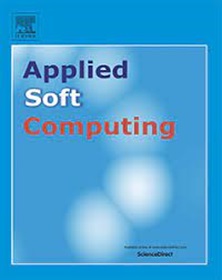开发区间 2 型模糊语义的最小二乘法框架
IF 7.2
1区 计算机科学
Q1 COMPUTER SCIENCE, ARTIFICIAL INTELLIGENCE
引用次数: 0
摘要
开发 IT2 模糊语义对于用词计算(CWW)至关重要,但现有方法缺乏灵活性,无法适应用户的多样化需求。本研究提出了一个最小二乘法框架,用于设计构建区间 2 型模糊集(IT2 FS)来表示语词语义的 CWW 编码器。在最小二乘法框架中,CWW 编码器由两个要素构成:内部不确定语义映射和内部不确定语义族。内部不确定语义映射将数据区间转换为类型-1 模糊集(T1 FS),然后使用最小二乘法从内部不确定语义族推导出最优的 IT2 FS。此外,还引入了几种内部不确定语义映射,并定义了一种相容性度量,以方便模型选择。最小二乘法框架得益于不确定语义内映射的灵活选择和基于最小二乘法优化的 IT2 FSs 构建。在实验中,最小二乘框架被用于处理真实世界的在线调查数据和中国生活服务点评网站大众点评网的大规模在线点评数据集。与增强区间法和郝-门德尔法相比,最小二乘法框架在实验和统计检验中表现出良好的效率,并能适应用户定义的内部和内部不确定语义族。本文章由计算机程序翻译,如有差异,请以英文原文为准。
A least-squares framework for developing interval type-2 fuzzy semantics
The developing of IT2 fuzzy semantics is critical for computing with words (CWW), but exiting approaches lack flexibility and fail to adapt user’s diversified demands. The study proposes a least-squares framework for designing CWW encoders that construct interval type-2 fuzzy sets (IT2 FSs) to represent the semantic meanings of linguistic words. In the least-squares framework, an CWW encoder is characterized by two elements: an intra-uncertain semantic mapping and an inter-uncertain semantic family. The intra-uncertain semantic mapping transforms data intervals into type-1 fuzzy sets (T1 FSs), then an optimal IT2 FS is derived from the inter-uncertain semantic family using the least-squares method. Furthermore, several intra-uncertain semantic mappings are introduced, and a compatibility measure is defined to facilitate model selection. The least-squares framework benefits from the flexible selection of intra-uncertain semantic mappings and least-squares optimization-based construction of IT2 FSs. In experiments, the least-squares framework is applied to handle real-world online survey data and the large-scale online review data set of a Chinese life service review site, Dianping.com. Compared to the enhanced interval approach and the Hao-Mendel approach, the least-squares framework shows its favorable efficiency in experiments and statistical tests, and adapts to user-defined intra- and inter-uncertain semantic families.
求助全文
通过发布文献求助,成功后即可免费获取论文全文。
去求助
来源期刊

Applied Soft Computing
工程技术-计算机:跨学科应用
CiteScore
15.80
自引率
6.90%
发文量
874
审稿时长
10.9 months
期刊介绍:
Applied Soft Computing is an international journal promoting an integrated view of soft computing to solve real life problems.The focus is to publish the highest quality research in application and convergence of the areas of Fuzzy Logic, Neural Networks, Evolutionary Computing, Rough Sets and other similar techniques to address real world complexities.
Applied Soft Computing is a rolling publication: articles are published as soon as the editor-in-chief has accepted them. Therefore, the web site will continuously be updated with new articles and the publication time will be short.
 求助内容:
求助内容: 应助结果提醒方式:
应助结果提醒方式:


